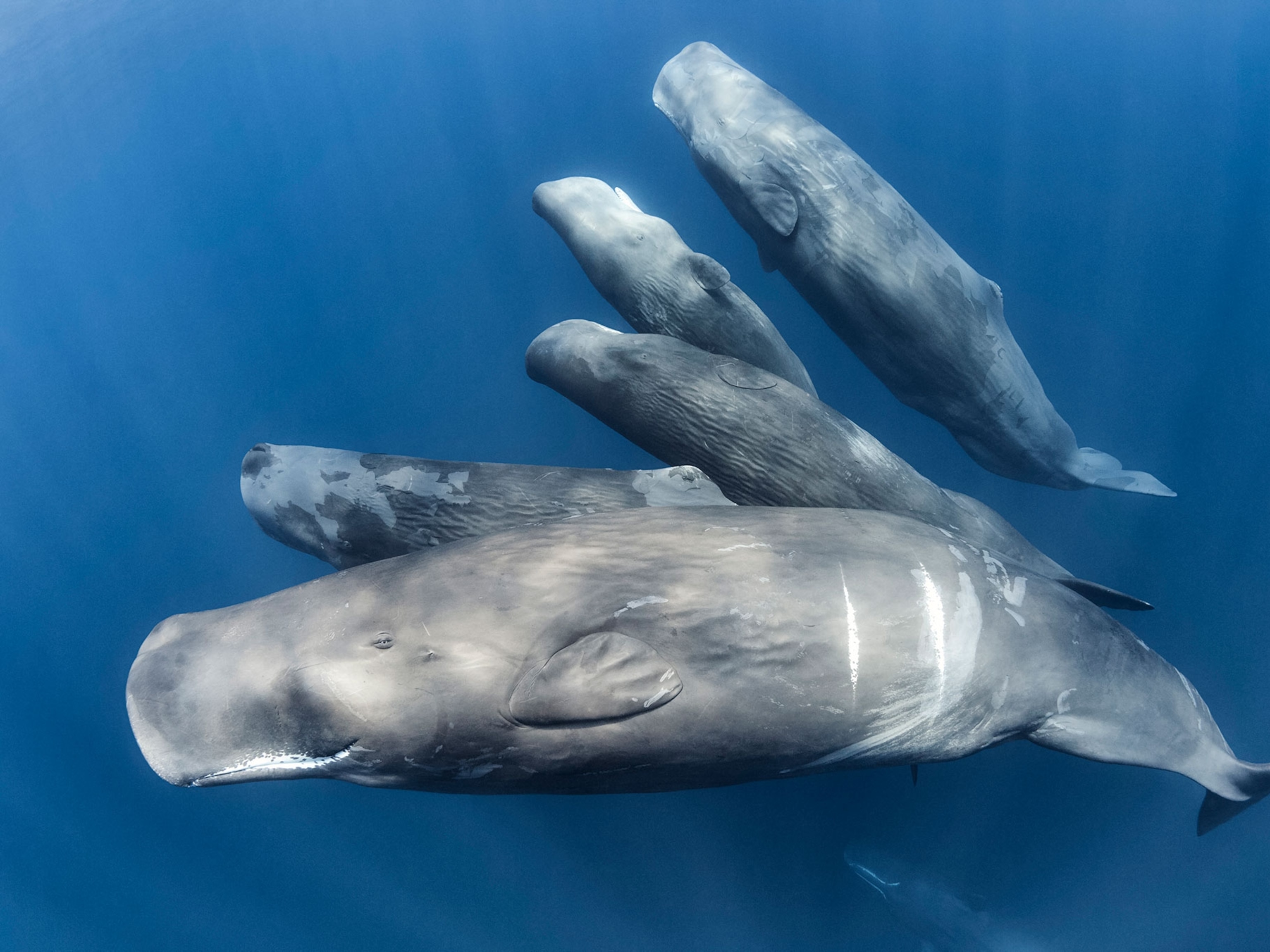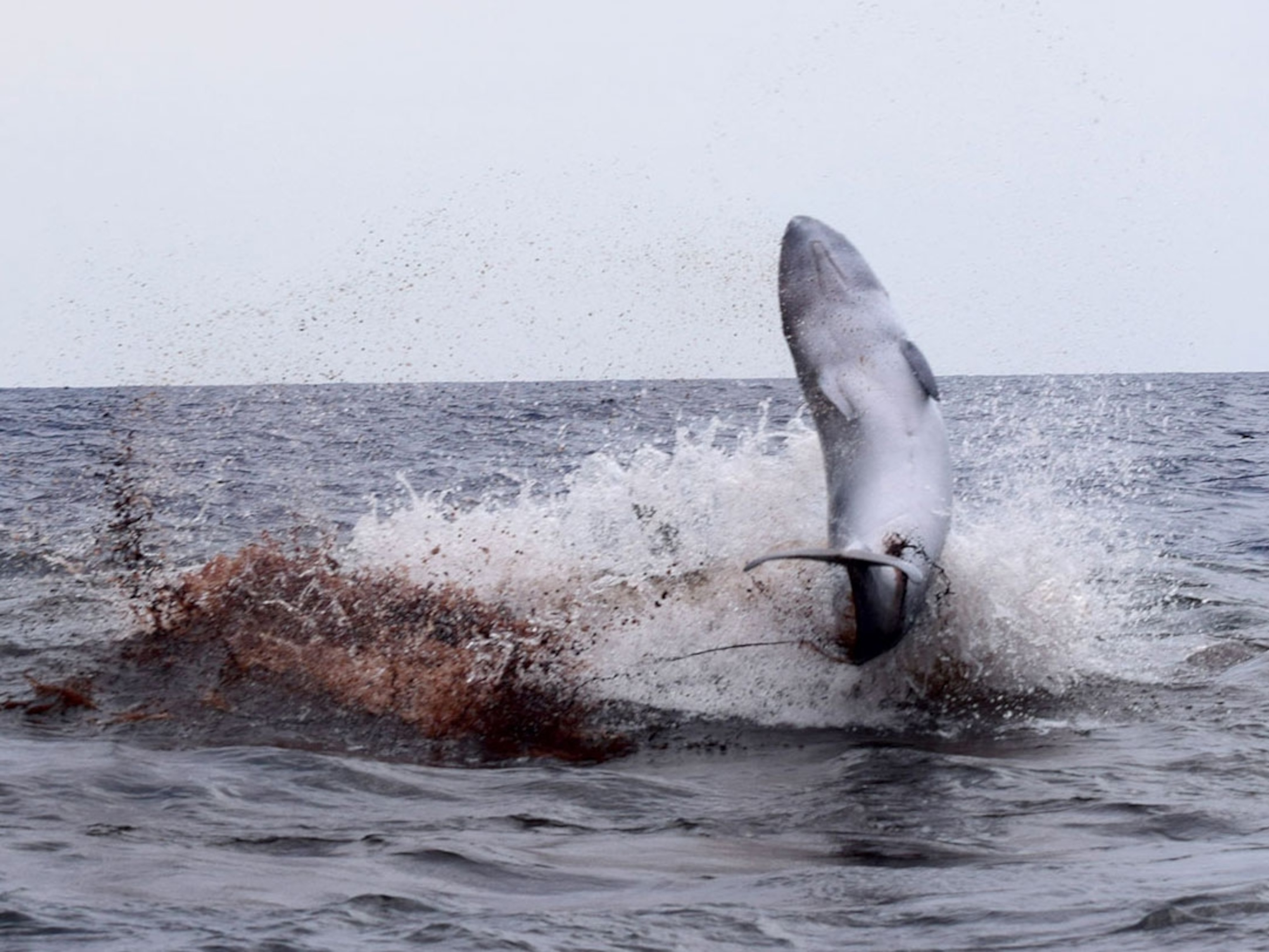
Oil Spill to Wipe Out Gulf's Sperm Whales?
Just three dead whales could push the Gulf population over the edge, experts say.
If the Gulf of Mexico oil spill kills just three sperm whales, it could seriously endanger the long-term survival of the Gulf's native whale population, scientists say.
Right now between 1,400 and 1,660 sperm whales live year-round in the Gulf of Mexico, making up a distinct population from other Atlantic Ocean groups, in which males make yearly migrations.
All sperm whales are considered endangered under the U.S. Endangered Species Act. But the Gulf of Mexico population is thought to be especially vulnerable due to its relatively small size.
The whales are now at risk from the ongoing Deepwater Horizon oil spill, because they are likely to ingest or inhale toxic crude and noxious oil fumes. (See pictures of the oil seeping into Louisiana marshes.)
"We know there's going to be some [oil] exposure, and we know there's an endangered species. If you put those two thing together, there is reason for concern," said Celine Godard-Codding, an environmental toxicologist at Texas Tech University.
A 2009 stock assessment report by the National Oceanic and Atmospheric Administration (NOAA) estimated that the potential biological removal, or PBR, level for the Gulf of Mexico sperm whale population is three.
That means the whales' long-term survival is at risk if, in addition to natural deaths, three sperm whales a year are killed or removed by human causes.
The loss of a handful of whales each year can impact a population of hundreds, because sperm whales—especially females—require a very long time to reach sexual maturity. Females then give birth to just three or four calves during their entire lifetimes.
"They're like humans. Most of the human population is not going to have six kids at once and do that every year," Godard-Codding said.
"As soon as we get to the level of three deaths caused by human interaction—and this would include the oil spill—that would jeopardize that particular sperm whale population."
Whales May Be Choked, Drowned, and Poisoned
Oil spills can affect sperm whales and other cetaceans, including dolphins, in a number of ways.
For starters, the marine mammals have to surface to breathe, and if they come up through an oil slick, they can suck the toxic substance into their lungs.
Also, the fumes on the surface of the water after a recent spill can be powerful enough to knock out full-grown whales, causing them to drown. (Read an eyewitness account of smelling the Gulf oil spill.)
Finally, the oil can taint the toothed whales' prey—fish and squid—affecting the whales' diets and hurting their chances of raising healthy calves. (See pictures of a sperm whale eating a giant squid.)
"The chemicals in the oil product that move up through the food web are a great concern for us," said Teri Rowles, coordinator of NOAA's marine-mammal health and stranding response program.
Previous studies have shown that at least some of the Gulf of Mexico sperm whales are known to hang around where the Deepwater Horizon oil rig was located before it exploded on April 20, triggering the spill.
"Between 2000 and 2005, about 300 [sperm] whales were seen on a consistent basis right in that area," Texas Tech's Godard-Codding said.
Dead Gulf Sperm Whales Hard to Tally
Some experts worry that the Gulf oil spill could be as damaging to sperm whales as the 1989 Exxon Valdez oil spill was to killer whales in Alaska's Prince William Sound. (See pictures of oil lingering in Alaska 20 years after Exxon Valdez.)
After the Exxon Valdez disaster, some populations of killer whales were reduced by as much as 40 percent, according to a 2008 study led by marine biologist Craig Matkin of the North Gulf Oceanic Society in Alaska.
Even now, that killer whale population has yet to recover and will likely go extinct in a few decades, Matkin said.
"We lost so many females out of that group that they couldn't catch up again. They still haven't caught up," he said.
If the current oil spill causes more than three Gulf sperm whale deaths this year, it could push that group into the "red zone," Matkin said.
Whether marine mammals are being affected by the Gulf oil spill is unclear. Oil is a suspected factor in the stranding of several coastal bottlenose dolphins (picture), but a firm link has yet to be established, NOAA's Rowles said.
"Deep-diving whales, like sperm whales living away from the shore"—and thus closer to the main body of the oil slick—"certainly have been exposed," she added.
Finding dead or affected whales will be difficult, however, because the animals spend most of their time underwater, and their bodies do not often wash ashore.
"In the aerial surveys that are being performed as part of the cleanup and marine-mammal observations, we are requesting that people report dead floating whales," Rowles said.





